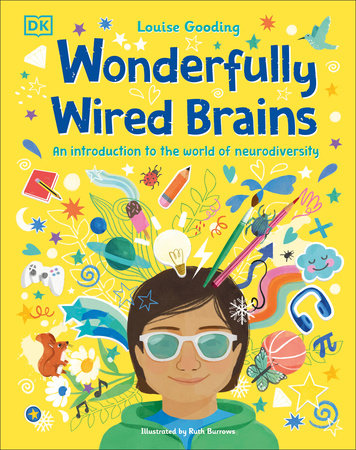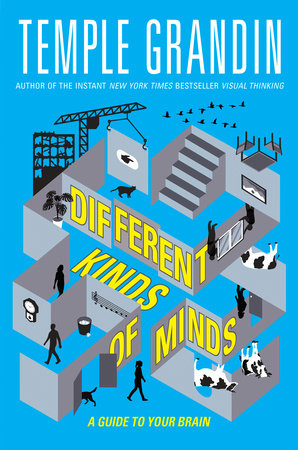An interactive book that addresses climate change? I’m in! I had the pleasure of reading The Fifth Hero: Escape Plastic Island and interviewing the author, Bill Doyle. This is the second book in The Fifth Hero series and just came out January 30.
About the Book
Hi Bill! Thank you for sharing the new book in The Fifth Hero series: Escape Plastic Island with me. Can you give us a short summary about the book?
Hihi! Thank you for inviting onto your site. I love what you’ve done with the place. It’s gorgeous and so comfy here.
The Fifth Hero: Escape Plastic Island is a choose-your-own-adventure, interactive story of four kids who couldn’t be less likely candidates for heroes of the climate…and yet they find themselves thrust into the role of Earth superheroes. One has the power to talk to animals (though he’s freaked out by nearly every animal); one controls the ground and can cause earthquakes and other ground-breaking acts (but she doesn’t seem to get that Earth can be broken and sometimes human actions go too far); the third can manipulate the water (but isn’t a fan of swimming); and the fourth can control the weather (but “control” is the wrong word…because every time she tries, things spin out of control!). And…the read is The Fifth Hero, making decisions at critical points to shape the narrative and the story’s outcome. Each of the decisions are “small” ones that have to do with the environment and small everyday actions we can take to help make a difference. Readers will see firsthand in this non-preachy, action-packed story how even the tiniest changes in our daily routines can have a massive ripple effect.
I love that they of the kids has a superpower. Who would especially enjoy this book?
Kids who like choose your own adventures; kids who want to make a difference and be agents of change in the world around them; kids who like action stories with a touch of humor.
Would you classify this as science fiction or fantasy?
I’d qualify The Fifth Hero series as science fiction. It takes place in the near-future and I tried to make all the innovations (like the gas-guzzling, disposable scooters) things that could actually exist soon. Yes, the kids gain superpowers by grabbing onto the spheres called the Four Ponies (yes, yes, like the Four Horsemen), but I still tried to keep everything based in science.
About the Author
How did your writing journey begin? Any other interesting jobs you have had?
Oh! I’ve ALWAYS wanted to be a writer. It’s the very first thing, seriously. I asked for a plastic toy typewriter when I was 7 or so, and I used to bang out stories on that. Along the way, I’ve been an editor with magazines, like Cat Companion (ha!), TIME For Kids, Sports Illustrated Kids, Kid City (aka Electric Company), and Scholastic News.
What authors (and/or books) would you say influenced your writing style and/or this book? [And did you read Choose Your Own Adventure books growing up?]
Yes, I did read Choose Your Adventures growing up, but, honestly, I wasn’t always crazy about them. Ugh. That sounds harsh, and I don’t mean to be. It’s just they often left me a little cold, and I wanted to have more connection with the character in the story. So I was determined in my books to make sure that I characters that kids will hopefully care about.
OK, and re writers who influenced me…get ready for name dropping! While I was getting my MFA in Dramatic Writing from Tisch at NYU, I had Arthur Miller teach me playwriting. Um. I know! Crazy, right? Plus, John Guar came in, and David Mamet, and John Patrick Shanley. One writer though who really affected me was a writer named Milan Stitt (he wrote the Tony-winning play The Runner Stumbles). He taught me something called The Major Dramatic Question. Anything worth reading has to have a Major Dramatic Question, he’d say…it’s the question the writer poses at the beginning of the story and maintains the tension around for the entire tale. It’s the reason readers want to keep turning pages, because they have to know the answer to the question.
Which of the characters in your book would you say you were most like growing up?
People might think I’d be most like Jarrett, who is a little more thoughtful and introspective than the other characters. But honestly, I think I was more like Agnes. I loved playing outside and being a little reckless…my brothers and I would try to have ski spills where we’d lose both skis and our poles (a yard sale, we’d call it) or we’d race backwards down the steepest hills on our skateboards. Agnes is brave, naively at times, when it comes to play, and I think I was the same.
Which power element would you want to possess?
Oh! I’d love to have the power to talk with animals, like Jarrett does. To know more about what my dog is think would be incredible!
Me too! What is something from your childhood that you snuck into the book?
For this book, I included a tiny bit of the feeling of a “crush” I think we all felt when were around 11 or 12. Just that wonderful feeling of liking spending time with someone.

Hi! This is me at around 8 on Lake Michigan reading The Hobbit. The first “grown-up” book I read on my own.
About Writing Series Books
Would you share the premise of the series?
Four 11-year-olds touch powerful spheres that are meant to destroy the world. The kids absorb the spheres and must harness their power to save the planet from the wicked family who wants to convince everyone to move up to the space hotels and colonies. The reader is the 5th Hero who must make decisions at crucial points in the plot to help save the day.
How did you get the idea for a series that addresses climate change?
As Editor of Scholastic News magazine, I get bombarded with the same scary climate news that lots of kids are seeing. And I also get to visit lots of schools…so I could see the environmental issues are very important to kids. I wanted to find a way to empower kids, to show them that they can make a difference…even with very small changes to their daily routine.
Where did you get the idea for this particular book in the series?
The idea for Escape Plastic Island came from just seeing pictures of plastic islands in the ocean, and reading about how the largest one is bigger than the state of Texas. Holy moly. That image just stuck in my head, and I knew had to write about it.
Where in the journey did you decide it would be a series vs. a stand-alone book?
Hopefully the two books so far in the series can stand alone, but the idea for making it a series was baked in from the very beginning.
Can you share any tips for writing a series? [Especially for avoiding too big a recap at the beginning of each book]
When writing a series, I usually try to do the recap or “previously on…” during an action sequence of some kind. I sprinkle it around fast-moving descriptions, trying to make the medicine of the exposition go down more smoothly!
Research/Writing
Did you always plan on involving the reader to make decisions, or is this something that came about later?
Empowering the reader with the superpower of changing the narrative was always part of the plan with this series. It’s something I love giving to kids. Normally that power is reserved for authors…only they get to control the story. But, thanks to time with screens, kids have come to expect a little more control in the stories they encounter. And they deserve that control too!
What research did you do for this book?
I actually got in touch with friend at Oceana.org, the world’s largest nonprofit that completely devoted to our oceans. They are true worldwide resource and I really, really recommend that people check out their work!
For Teachers
How can teachers make the most out of the message in this book?
Tackling stories about the environment in the classroom can be complicated, stressful, and, frankly, depressing. I hope my books and their positive message about the future can help with that. I feel like the message that kids can make simple, everyday changes in their routines to help out the planet is one that any student can grasp. I give specific examples of what those change might be in the books—and the ripple effect they might have on the health of our environment.
Are you doing school visits related to this book?
Yes! Yes! Definitely doing school visits. That’s one of my favorite things to do! I can make a school visit work with third graders all the way up through eighth grade. I usually do a fun, interactive writing workshop with the kids, so that by the time I go we’ve had a great time developing at least one new stellar idea for a series.
How can we learn more about you?
So…the best way to learn more about me and to reach out to me is through my website: www.billdoyle.net. Please come visit me there!
Thanks for your time, Bill.
Be sure to check out The Fifth Hero: Escape Plastic Island!
Like this:
Like Loading...

























